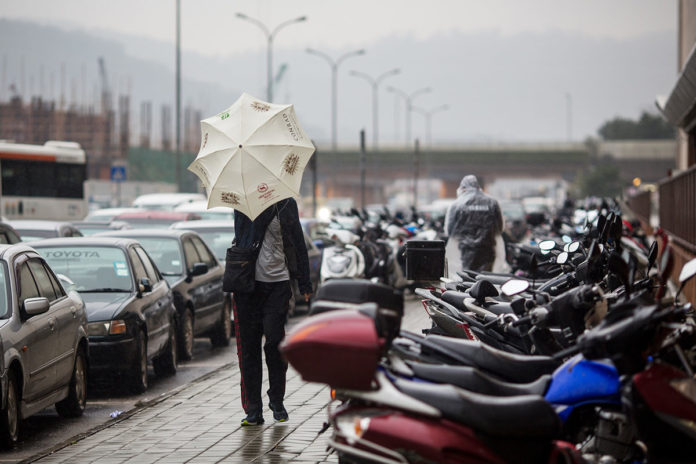The level of greenhouse gas (GHG) emissions in Macau grew by 15.4 per cent over the course of 2015 when compared to the levels measured the previous year, according to the latest report released by the Environmental Protection Bureau (DSPA), entitled ‘Macau’s Environmental Condition in 2016’.
The report points out that the growth in GHG emissions was due to the ‘amount of locally produced electricity’, causing a surge in the emission of carbon dioxide (CO2). Nevertheless, the growth pattern of GHG demonstrated a downward trend between 2006 and 2015.
In 2015, the level of GHG and CO2 emissions created by local electricity production exceeded the emission levels produced by land transportation.
Regarding the state of air pollution in 2016, the data from the report shows that the five automatic air-quality monitoring stations in the city recorded that over 95 per cent of the total number of days in 2016 were marked as having ‘good’ and ‘moderate’ levels of air quality last year, with no ‘very unhealthy’ levels recorded during the year.
According to the report, apart from land transportation (which accounted for 18.3 per cent of total energy use in 2016), the commercial, food & beverage and hotel industries altogether consumed 14.8 per cent of the total energy resources in the city, with both transportation and the commercial sectors seeing a 2.7 per cent uptick year-on-year.
The amount of combustibles consumed by land-based transportation underwent a 2.7 per cent annual increase in 2016, while that of maritime transport saw a 7.4 per cent increase.
Given the data, the report suggested the use of green energy for vehicles, the promotion of electric vehicle usage and the enhancement of cooperation between regions in monitoring air pollutants.
Increased demand for water
Owing to the launch of new resorts located on the Cotai Strip, the demand for water grew notably in the area, with consumption increasing by 13.2 per cent when compared to figures registered in 2015.
In terms of consumption by different sectors, water for commercial usage experienced the highest year-on-year growth, up 3.3 per cent, while public and domestic usage grew by 1.5 per cent and 1.8 per cent, respectively.
Water for industrial use was the only sector that registered a downward trend, decreasing by 4.1 per cent year-on-year.
Commercial usage accounted for 45.2 per cent of the total water consumption in the city for the year 2016, the report revealed.
Regarding water pollution, the report stated that the problem remained serious despite improvements over the year. The inauguration of new resorts also resulted in an increase in the volume of sewage treatment.
Less construction waste
Given the gradual completion of large scale construction projects in the city, the volume of construction wastage dropped significantly over the course of 2016, by 32.4 per cent.
However, the overall sewage disposed of during 2016 increased by 1.7 per cent year-on-year and was the highest level registered in the past decade, despite the growth slowing last year.
In particular, the disposal of abandoned vehicles increased by 13.6 per cent, with the number of heavy vehicles and semi-trailers experiencing the highest growth, up 48.4 per cent and 33.3 per cent, respectively.
Meanwhile, the rate of recycling of solid waste increased by 1.2 per cent, but the trend showed a downward movement due to the growth recorded in the disposal of solid waste in the past ten years.
The report also revealed that the number of local hotels that were awarded for being environmentally friendly increased by 30.6 per cent year-on-year, to 47 hotels, accounting for a total of 22,655 hotel rooms.
























